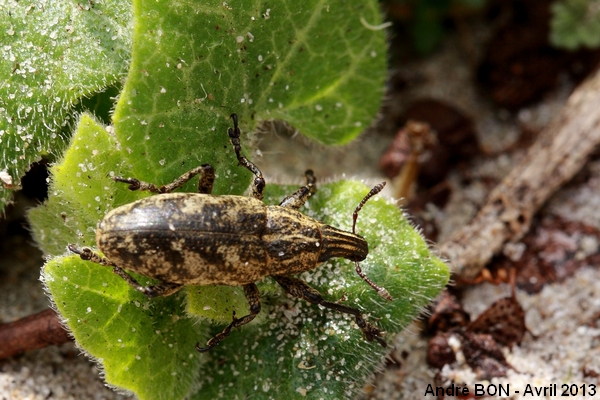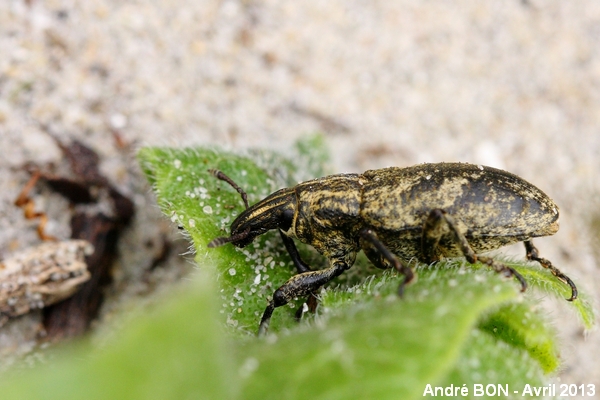

| Sluggish Weevil (Cleonis pigra (Scopoli, 1763)) |


|
|
Scientific name: Cleonis pigra (Scopoli, 1763) Common name: Sluggish Weevil Other names: Large Thistle Weevil. Other scientific name: Cleonus piger French name: Charançon du chardon, Charançon lent. Order: Coleoptera Family: Curculionidae Wingspan : 13 to 19 mm. Biotope: Fallow lands and any other place with thistles. The larvae feed at the base of thistles, dig a gallery inside the stem and move downwards eating the primary roots. Geographic area: Eurasia but missing in the extreme northern regions, North Africa, introduced to North America to control Creeping Thistle. Observation period : All year round. The new generation emerge from August to October. Adults over winter and then females lay their eggs at the base of host plants between mid-April and late June. |
The Large Thistle Weevil shows short yellowish grey hairs over a black body. The elytra bear two dark V-shaped markings. There are three broad grooves extending on all the length of the rostrum. The centre of the thorax is darker than the lateral sides. |
| [To know more about the Sluggish Weevil] [Next picture] [Top] |

|
I came to the park of Marquenterre in the Somme bay in order to observe birds. But one insect crossing the footpath between two birdwatching hides was enough to forget the initial purpose of my visit. This upper side view clearly shows the V-shaped markings on the elytra. |
| [To know more about the Sluggish Weevil] [Previous picture] [Top] |

|
Side view. |